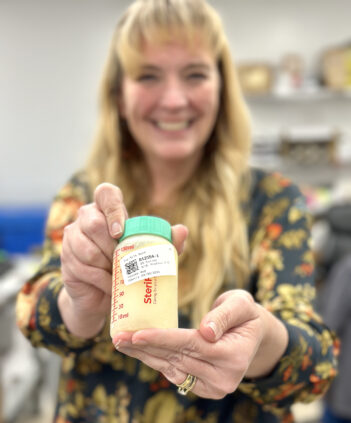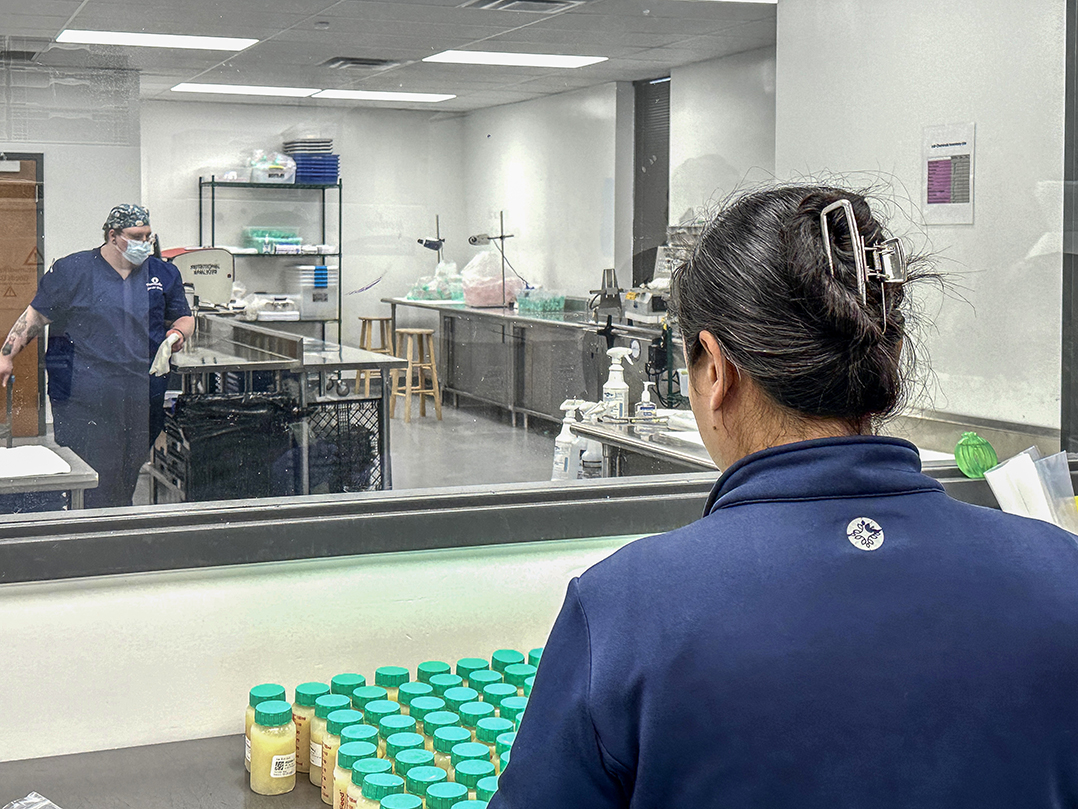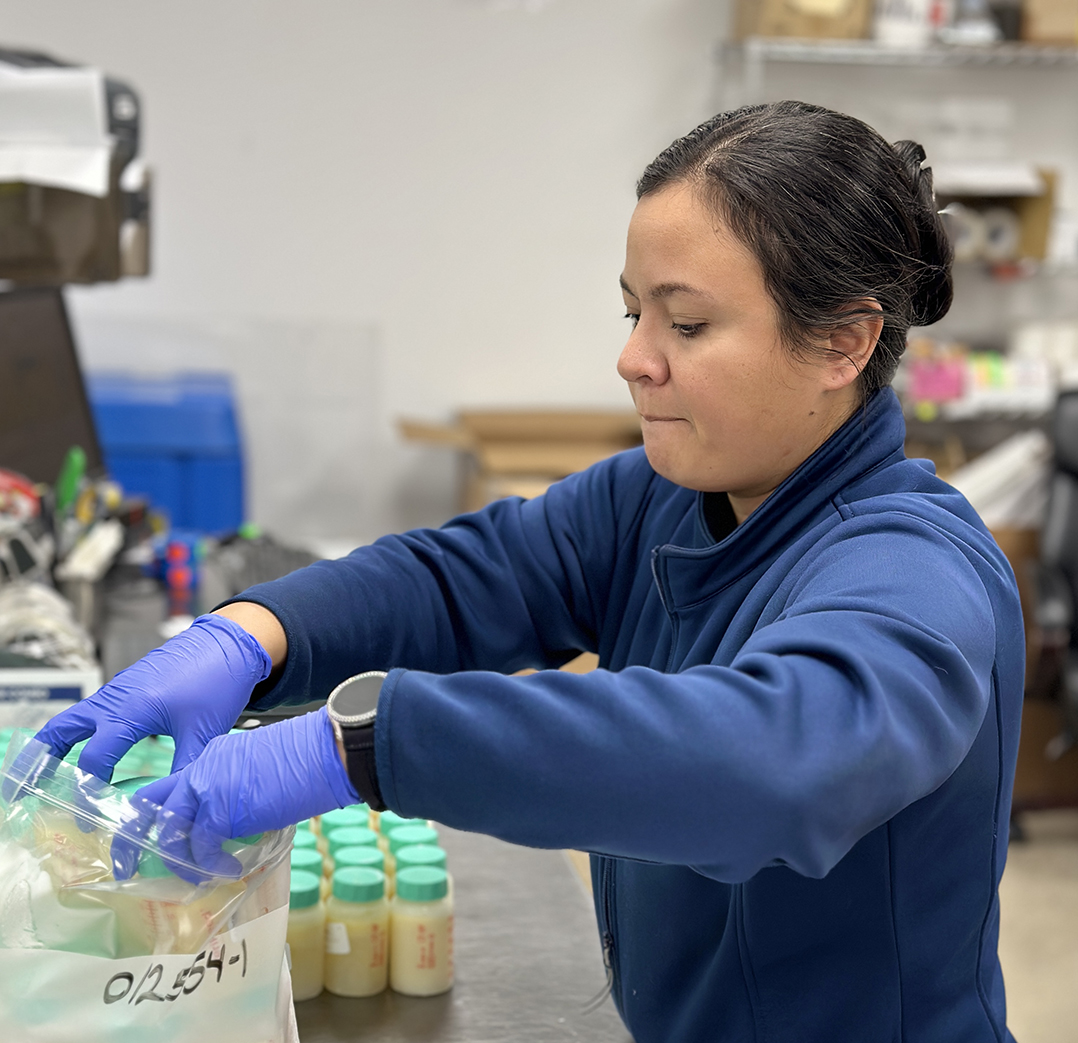In a sterile room, surrounded by gleaming stainless-steel equipment, a technician carefully processes gallons of milk, pasteurizing it slowly in batches. It’s similar to a commercial milk-processing operation. In this case, though, it’s a nonprofit processing and distributing human milk, often donated by grieving parents who want to help other babies as they deal with the loss of their own.

Founded in 2005, the Milk Bank of Indiana is not as well known as, for example, a blood bank. CEO Freedom Kolb, a Fishers resident, wants to change that and spread the word as far as possible, in part because of the constant need for new milk donors.
“We need 100 new milk donors a month, just to keep up with demand,” Kolb said. “Over the course of the year, we have about 1,000 to 1,200, but what we’re seeing has been demand is increasing after COVID and the formula shortage — we’re seeing more and more hospitals request donor milk.”
Donor milk is both food and medicine, she said. It can save babies’ lives — in some cases increasing survival rates by more than 75 percent.
“We dispense about a half a million ounces a year,” Kolb said. “And for the micro-preemies, 1 ounce can provide three feedings, so we’re providing about 1.5 million feedings for infants.”
Kolb said Indiana has a high infant mortality rate compared to the rest of the nation, and the United States’ rate is high compared to other developed countries. The Milk Bank plays a part in trying to reduce those rates, she said. They also work closely with parents who have experienced the loss of their infant.
“Now we’re going to walk down our memorial wall,” she said, leading the way to a hallway with a memorial “tree” painted on the wall, each leaf bearing the name of an infant who didn’t survive. “These are families who have experienced infant loss and we stand alongside them. We provide bereavement support groups. We do open houses so they can meet other families — this is their memorial wall. They’ve paid their milk forward to save another life.”
Kolb said about 10 percent of milk donors are bereaved families, and studies show that donating milk can help facilitate the grief process.
“A lot of families will tell us the process of pumping and providing milk — not only do they know they have the ability to save another life, but it created a connection to the infant that they lost,” she said. “It gives them a reason to talk about their son or daughter, we’ve had moms tell us it’s the first time they felt like a mom.”
Those families often find out about the Milk Bank through their health care providers, but some grieving families learn about the nonprofit through an online inquiry about what to do with their milk.
Many other donors are parents who simply have an abundance of milk and a willingness to give.
“We’re really reaching out to a very small (group),” Kolb said. “I call it the army of moms that are saving all of these babies.”
There are milk banks in other states as well because the need is everywhere. Kolb said each is independent, but they’re all certified to meet specific standards and guidelines. Indiana’s Milk Bank has satellite locations and drop-off depots throughout Indiana — from Newburgh to Michigan City — making it as easy as possible for parents to donate.
Any lactating parent can donate milk, and even a small amount can make a difference.
According to the Milk Bank website, signing up to donate can take up to a month because of required safety measures and health assessments. But a parent can pump milk and freeze it in the meantime.
“If you’ve been recording the date pumped on your storage containers, we can accept milk that has already been pumped,” the website states. “Milk can typically be donated up to nine months (after the) pump date when stored properly in a freezer.”

Donated milk is weighed, recorded by donor ID and kept frozen until it goes to the Milk Bank’s lab, where it’s defrosted, nutritionally analyzed and pooled with milk from up to four other donors, which increases the disease-fighting properties of the milk.
“Milk is portioned into specialty bottles, sealed and labeled with a tracking bar code before being pasteurized to kill any harmful bacteria,” the website states. “Pasteurized milk is stored in a walk-in freezer while one bottle is sent offsite for a final microbiological test.”
Following that final test, the milk is sent to hospitals and other recipients, providing lifesaving nutrition for babies.
For more about the Milk Bank, visit themilkbank.org.

Leadership training
Freedom Kolb, formerly a therapist, has worked with nonprofits for many years, including Big Brothers, Big Sisters and education foundations. She recently was selected to participate in the Mutz Philanthropic Leadership Institute, a leadership training class for people who work in the nonprofit sector.
“It is really a group designed to bring the philanthropic leadership community together and provide them a rich background and opportunity for networking and connection,” Kolb said, noting that there’s a limited number of people selected to participate each year. “It’s a monthly classroom style and experiential-learning type of experience, where you get to connect with other professionals in the field. We’ll then go a little bit deeper into what is effective philanthropy — how does our society and our democracy depend on philanthropy to run — and it’s way up my alley. I’m just grateful to be a part of it.”
For more about Indiana Philanthropy Alliance, visit inphilanthropy.org.





